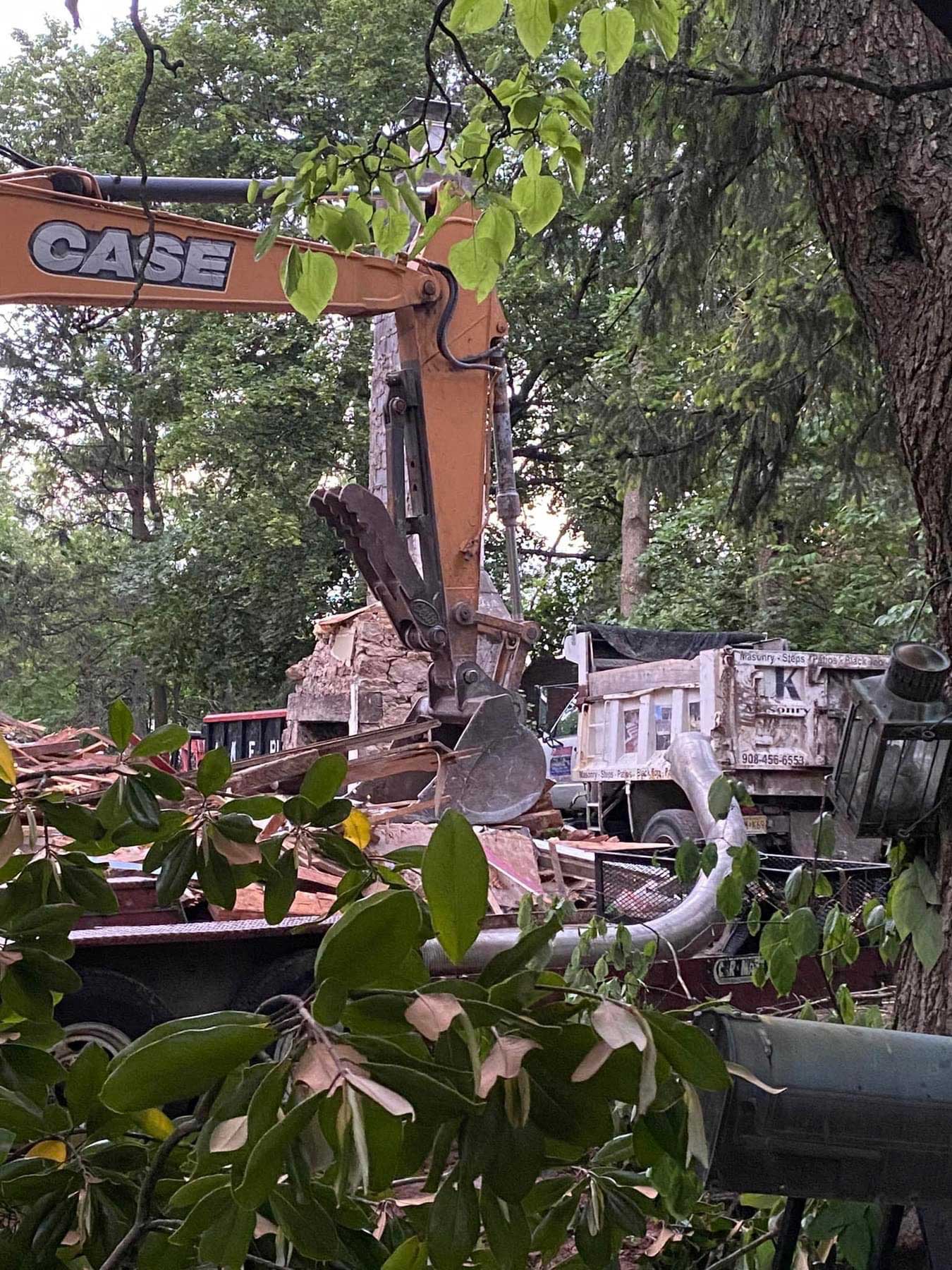
When Johanna Karpf saw a backhoe parked at her neighbor’s home last week, she assumed the new owners were asphalting the driveway. In a matter of hours the historic home built in the 18th century became a pile of dust and splinters.
“I was heartbroken,” Kapf said. “The times we met the owner, he seemed proud of his home.”
The two-story Dutch colonial at 103 Parker Avenue in Maplewood, NJ, was known as the Fleming House. Its history goes back to 1775 when a shoemaker named Aaron Ball, son of one of the village’s earliest European settlers, built a one-story lodge in the woods.
The home notched a chapter in Helen B. Bates Maplewood Past and Present. “So hard is the wood in the beams today after 123 years that the modern wire nail is unable to penetrate it,” Bates wrote. “It is a small and unpretentious house, but its solid strength and unaffected simplicity convey a sense of security, comfort, and charm that can hardly be exaggerated.”

The demolished home wasn’t just old — it was arguably one of the most important homes in the township. It was also in fairly good condition structurally if we are to take Bates at her word. So how did a township that prides itself on the preservation of its history let this happen?
In many municipalities, including Maplewood, the historic preservation commission is tasked with protecting the historical integrity of a community. But the Fleming House was never designated as a local, state, or national landmark, so the commission couldn’t have done anything legally to prevent the demolition.
Designating a landmark is an expensive endeavor. At first the State Historic Preservation office allowed volunteers to author nominations, but they soon realized the flood of incoming applications “weren’t worth the paper they were written on,” according the Liz Del Tufo, president of Newark Landmarks. The solution was to require that only a hired architectural firm could nominate a landmark. However, this caused the pendulum to swing the other way — cash-strapped preservationists now found themselves unable to nominate buildings that truly deserved it — the Warren Street School among the examples.
The news of the demolition on the SOMA Lounge Facebook group initiated a conversation about the difficulties of owning an old home and the lack of support. Old homes require expensive maintenance and repairs. On top of that, if a property is officially designated a landmark, the owners have to deal with the oversight of a commission, which requires “in kind” materials. Meaning wooden clapboard cannot be replaced with cheaper alternatives like vinyl or aluminum siding. Also, homeowners cannot install solar panels to save on electricity bills if the panels are visible from the street.
“A lot of money goes into owning a historic home,” Kapf said.
Often people who own and preserve old homes do not own them accidentally. Dan Reeve, the owner of the 18th-century Sydenham House in Newark’s Forest Hill neighborhood, told Jersey Dig that he and his wife wanted to be “stewards of a historic home.” But not everyone is cut out for it. The family that Reeves bought the home from had only occupied it for a couple years, before putting it back on the market after realizing they were in over their heads.
“We are personally financing what is perceived to be a public good,” Cathy Burke Rowe wrote in SOMA Lounge. “If you really want these old houses, help us. Have a fund for repairs, which are a lot more than most homes.”
In the meantime, if Maplewood residents want to make it more difficult to demolish historic buildings, they should take a page out of Montclair’s playbook and strengthen its demolition ordinance. Montclair’s HPC can prevent the demolition not only of designated landmarks, but also homes that have been mentioned in architectural surveys, which buys the commission time to make a timely nomination to save a piece of its local history.